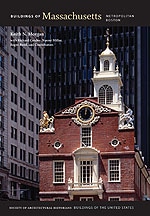
The care of the sick and the aged was a constantly changing public responsibility from the seventeenth century on. In 1871, the Cambridge Hospital was founded to treat poor patients, since those who could afford medical care were still nursed at home. In 1884 William E. Chamberlin designed a handsome stone, red brick and terra-cotta three-part hospital complex (NR-DOE) consisting of a central three-story unit flanked by one-story wards connected by covered passageways; all three sections had hipped roofs with copper intake louvers for air circulation. The operating room, dining room, and staff housing were located in the central block. Separate red brick buildings were constructed for the nurses' residence (1896, enlarged 1917 and 1928) and surgery (1897). Other structures were added and eliminated as the hospital grew. Perry, Dean and Stewart designed the most dramatic addition, a ten-story red brick tower with wards, laboratories, and offices with attached parking garage in 1969. The adjacent Cambridge Homes for Aged People (1898, enlarged 1912, Stickney and Austin), a red brick Georgian unit at 360 Mount Auburn Street, supported a similar charitable purpose.

